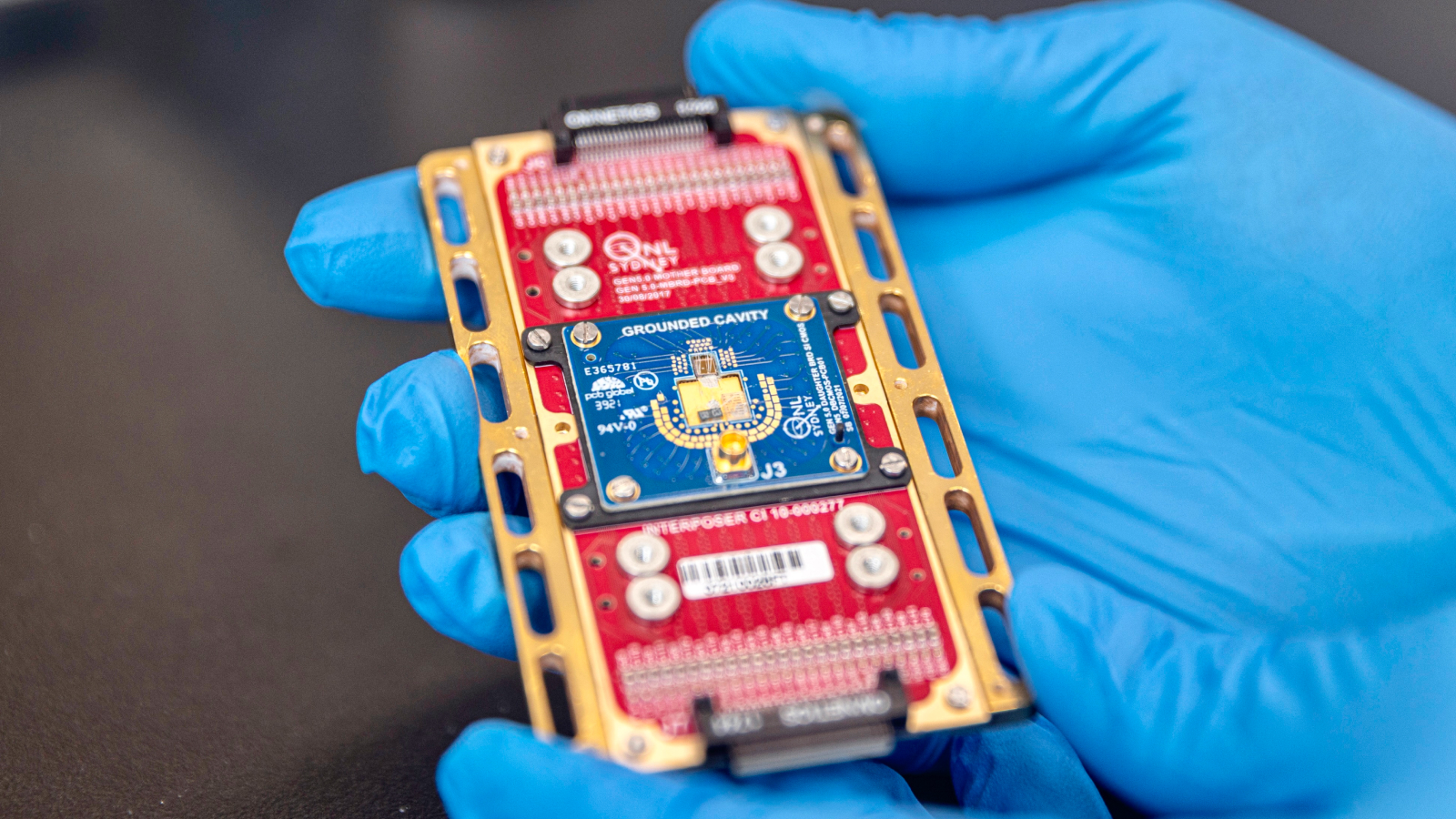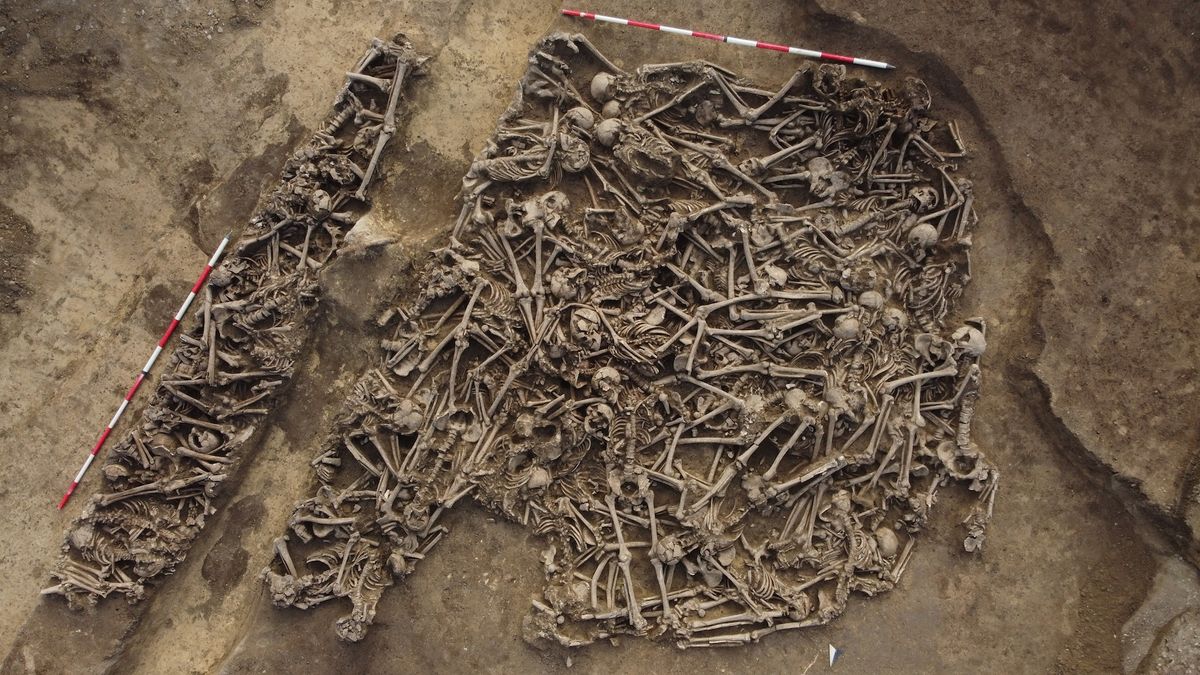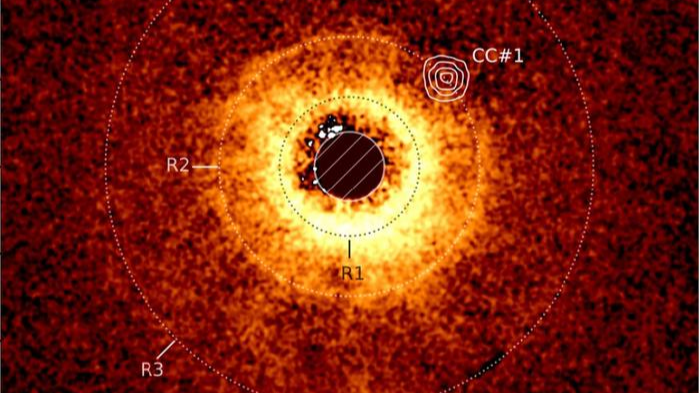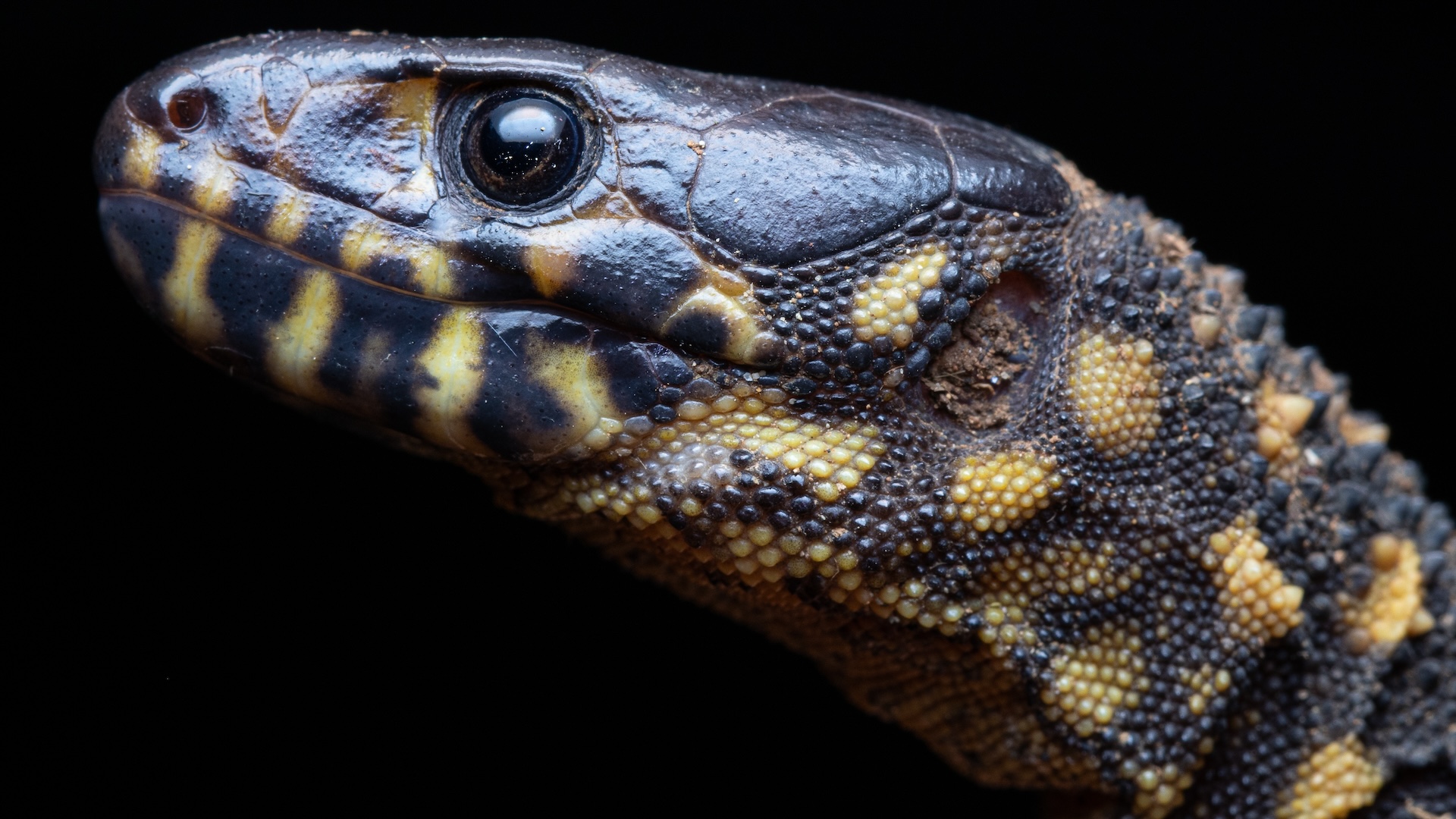The remains of about 150 Roman soldiers have been discovered beneath a soccer field in the Austrian capital of Vienna, indicating a fierce battle against Germanic warriors happened there in the first or second century A.D.
Construction workers found the remains in a mass grave beneath a sports field in the city’s southern Simmering district during renovations in October 2024.
The remains have now been extensively studied, and the find was announced by the city’s authorities Wednesday (April 2).
According to the translated statement, the individuals in the mass grave were exclusively men, some of whom were buried with distinctive armor and weapons that established that they’d been Roman soldiers. Many had injuries on their bones caused by weapons like lances, daggers and swords, which indicated that their deaths were due to fighting, the statement said.
Related: Archaeologists may have finally discovered famous ‘lost’ canal built by Julius Caesar’s uncle
The discovery suggests the soldiers were killed while fighting with Germanic warriors along the northern frontier of the Roman Empire, which was known as the Germanic Limes. The site of the mass grave is only a few miles from Vindobona, now in central Vienna, which was a major Roman military fort until the Germanic invasions in the fifth century.
Rare Roman burials
Archaeologists said the discovery of the mass grave is especially important because the Romans often cremated their dead, and so Roman inhumation burials from this time have rarely been found.
“In the Roman Empire, there were strict burial rituals and precise rules that had to be observed even for the time after death,” Kristina Adler-Wölfl, head of the city’s archaeological department, said in the statement. “Since cremations were common in the European parts of the Roman Empire at the time around 100 AD, body burials are an absolute exception.”
Examinations have shown that the dead in the mass grave were exclusively male, with an average height of about 5 feet, 7 inches (1.7 meters)—a few inches taller than the average Roman legionary, but then Germanic warriors were about the same height. They seem to have been buried in no recognizable order or physical orientation, and had been generally in good health until their violent deaths, according to an analysis of their bones and teeth.
“The injuries to the bones are clearly due to fighting,” said Michaela Binder, a bioarchaeologist with the archaeology firm Novetus, which the city has contracted to investigate the find.
“From the arrangement of the skeletons, and since they are purely male remains, it can be ruled out that the site of the find is connected to a military hospital or the like, or that an epidemic was the cause of death,” she said.
Roman stronghold
Thousands of Roman soldiers were stationed at the Vindobona fort at its height in the third century A.D., and the nearby settlement was home to about 20,000 people. Several written accounts survive about Roman soldiers fighting with Germanic warriors along the frontier, but the mass grave is the first physical evidence of fighting at this time and place.
The city authorities said in the statement that the mass grave may have been caused by a major battle in the area, which was then used by the Romans as a reason to expand the fort’s defenses and garrison of soldiers.
Archaeologists are still analyzing the remains from the mass grave and the many artifacts found there, which include a dagger, pieces of armor and the nails from shoes. The researchers hope ancient DNA analysis and isotope analysis of the bones will reveal more about the origins and the living conditions of the soldiers buried there.
Roman emperor quiz: Test your knowledge on the rulers of the ancient empire














